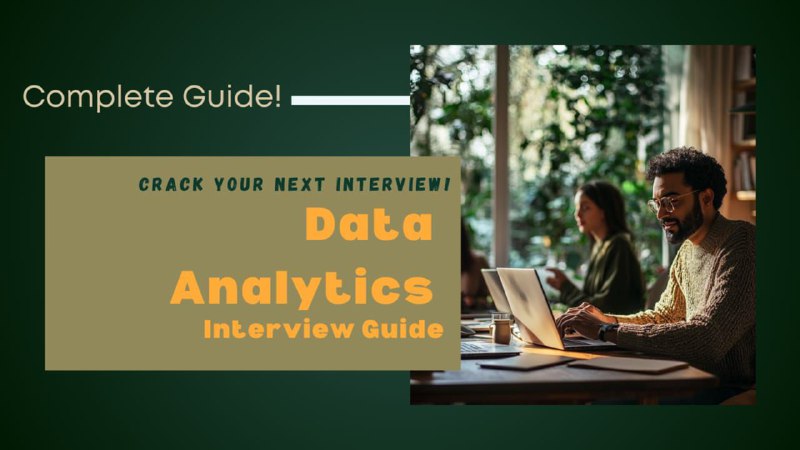Python Projects & Resources
Download Free Books & Courses to master Python Programming
- ✅ Free Courses
- ✅ Projects
- ✅ Pdfs
- ✅ Bootcamps
- ✅ Notes
Admin: @Coderfun
Buy ads: https://telega.io/c/pythondevelopersindia
News and announcements of the library. No books here.
??Official Chinese channel: t.me/zlib_china_official
? https://z-library.sk
https://en.wikipedia.org/wiki/Z-Library
? https://twitter.com/Z_Lib_official
? https://mastodon.social/@Z_Lib_official
Last updated 1 year, 4 months ago
Intel slava is a Russian News aggregator who covers Conflicts/Geopolitics and urgent news from around the world.
For paid promotions and feedback contact us at: @CEOofBelarus
Last updated 10 months, 3 weeks ago
💫Welcome to the best book channel of Telegram.
✨Buy ads: https://telega.io/c/BooksHub25
✨Contact admin ➠ @Bookshub_contact_bot
✨ Copyright Disclaimer➠ https://telegra.ph/LEGAL-COPYRIGHT-DISCLAIMER-09-18
𝐈𝐦𝐩𝐨𝐫𝐭𝐢𝐧𝐠 𝐍𝐞𝐜𝐞𝐬𝐬𝐚𝐫𝐲 𝐋𝐢𝐛𝐫𝐚𝐫𝐢𝐞𝐬:
import pandas as pd
import numpy as np
import matplotlib.pyplot as plt
import seaborn as sns
𝐋𝐨𝐚𝐝𝐢𝐧𝐠 𝐭𝐡𝐞 𝐃𝐚𝐭𝐚𝐬𝐞𝐭:
df = pd.read_csv('your_dataset.csv')
𝐈𝐧𝐢𝐭𝐢𝐚𝐥 𝐃𝐚𝐭𝐚 𝐈𝐧𝐬𝐩𝐞𝐜𝐭𝐢𝐨𝐧:
1- View the first few rows:
df.head()
2- Summary of the dataset:
df.info()
3- Statistical summary:
df.describe()
𝐇𝐚𝐧𝐝𝐥𝐢𝐧𝐠 𝐌𝐢𝐬𝐬𝐢𝐧𝐠 𝐕𝐚𝐥𝐮𝐞𝐬:
1- Identify missing values:
df.isnull().sum()
2- Visualize missing values:
sns.heatmap(df.isnull(), cbar=False, cmap='viridis')
plt.show()
𝐃𝐚𝐭𝐚 𝐕𝐢𝐬𝐮𝐚𝐥𝐢𝐳𝐚𝐭𝐢𝐨𝐧:
1- Histograms:
df.hist(bins=30, figsize=(20, 15))
plt.show()
2 - Box plots:
plt.figure(figsize=(10, 6))
sns.boxplot(data=df)
plt.xticks(rotation=90)
plt.show()
3- Pair plots:
sns.pairplot(df)
plt.show()
4- Correlation matrix and heatmap:
correlation_matrix = df.corr()
plt.figure(figsize=(12, 8))
sns.heatmap(correlation_matrix, annot=True, cmap='coolwarm')
plt.show()
𝐂𝐚𝐭𝐞𝐠𝐨𝐫𝐢𝐜𝐚𝐥 𝐃𝐚𝐭𝐚 𝐀𝐧𝐚𝐥𝐲𝐬𝐢𝐬:
Count plots for categorical features:
plt.figure(figsize=(10, 6))
sns.countplot(x='categorical_column', data=df)
plt.show()
Python Interview Q&A: https://whatsapp.com/channel/0029Vau5fZECsU9HJFLacm2a
Like for more ❤️
ENJOY LEARNING 👍👍

𝟰 𝗠𝘂𝘀𝘁-𝗗𝗼 𝗙𝗥𝗘𝗘 𝗖𝗼𝘂𝗿𝘀𝗲𝘀 𝗳𝗼𝗿 𝗗𝗮𝘁𝗮 𝗦𝗰𝗶𝗲𝗻𝗰𝗲 𝗯𝘆 𝗠𝗶𝗰𝗿𝗼𝘀𝗼𝗳𝘁!😍
Want to stand out in Data Science?📍
These free courses by Microsoft will boost your skills and make your resume shine! 🌟
𝐋𝐢𝐧𝐤👇:-
📢 Don’t miss out! Start learning today and take your data science journey to the next level! 🚀

🎓 Build Your Career In Data Analytics! 📊
🌟 2000+ Students Placed
💰 7.4 LPA Average Package
🚀 41 LPA Highest Package
🤝 500+ Hiring Partners
Registration link: https://tracking.acciojob.com/g/PUfdDxgHR
Limited Seats, Register Now!✨
Python Roadmap for 2025: Complete Guide
-
Python Fundamentals
1.1 Variables, constants, and comments.
1.2 Data types: int, float, str, bool, complex.
1.3 Input and output (input(), print(), formatted strings).
1.4 Python syntax: Indentation and code structure. -
Operators
2.1 Arithmetic: +, -, , /, %, //, *.
2.2 Comparison: ==, !=, <, >, <=, >=.
2.3 Logical: and, or, not.
2.4 Bitwise: &, |, ^, ~, <<, >>.
2.5 Identity: is, is not.
2.6 Membership: in, not in. -
Control Flow
3.1 Conditional statements: if, elif, else.
3.2 Loops: for, while.
3.3 Loop control: break, continue, pass. -
Data Structures
4.1 Lists: Indexing, slicing, methods (append(), pop(), sort(), etc.).
4.2 Tuples: Immutability, packing/unpacking.
4.3 Dictionaries: Key-value pairs, methods (get(), items(), etc.).
4.4 Sets: Unique elements, set operations (union, intersection).
4.5 Strings: Immutability, methods (split(), strip(), replace()). -
Functions
5.1 Defining functions with def.
5.2 Arguments: Positional, keyword, default, args, *kwargs.
5.3 Anonymous functions (lambda).
5.4 Recursion. -
Modules and Packages
6.1 Importing: import, from ... import.
6.2 Standard libraries: math, os, sys, random, datetime, time.
6.3 Installing external libraries with pip. -
File Handling
7.1 Open and close files (open(), close()).
7.2 Read and write (read(), write(), readlines()).
7.3 Using context managers (with open(...)). -
Object-Oriented Programming (OOP)
8.1 Classes and objects.
8.2 Methods and attributes.
8.3 Constructor (init).
8.4 Inheritance, polymorphism, encapsulation.
8.5 Special methods (str, repr, etc.). -
Error and Exception Handling
9.1 try, except, else, finally.
9.2 Raising exceptions (raise).
9.3 Custom exceptions. -
Comprehensions
10.1 List comprehensions.
10.2 Dictionary comprehensions.
10.3 Set comprehensions. -
Iterators and Generators
11.1 Creating iterators using iter() and next().
11.2 Generators with yield.
11.3 Generator expressions. -
Decorators and Closures
12.1 Functions as first-class citizens.
12.2 Nested functions.
12.3 Closures.
12.4 Creating and applying decorators. -
Advanced Topics
13.1 Context managers (with statement).
13.2 Multithreading and multiprocessing.
13.3 Asynchronous programming with async and await.
13.4 Python's Global Interpreter Lock (GIL). -
Python Internals
14.1 Mutable vs immutable objects.
14.2 Memory management and garbage collection.
14.3 Python's name == "main" mechanism. -
Libraries and Frameworks
15.1 Data Science: NumPy, Pandas, Matplotlib, Seaborn.
15.2 Web Development: Flask, Django, FastAPI.
15.3 Testing: unittest, pytest.
15.4 APIs: requests, http.client.
15.5 Automation: selenium, os.
15.6 Machine Learning: scikit-learn, TensorFlow, PyTorch. -
Tools and Best Practices
16.1 Debugging: pdb, breakpoints.
16.2 Code style: PEP 8 guidelines.
16.3 Virtual environments: venv.
16.4 Version control: Git + GitHub.
👇 Python Interview 𝗥𝗲𝘀𝗼𝘂𝗿𝗰𝗲𝘀
https://t.me/dsabooks
📘 𝗣𝗿𝗲𝗺𝗶𝘂𝗺 𝗗𝗮𝘁𝗮 𝗦𝗰𝗶𝗲𝗻𝗰𝗲 𝗜𝗻𝘁𝗲𝗿𝘃𝗶𝗲𝘄 𝗥𝗲𝘀𝗼𝘂𝗿𝗰𝗲𝘀 : https://topmate.io/coding/914624
📙 𝗗𝗮𝘁𝗮 𝗦𝗰𝗶𝗲𝗻𝗰𝗲: https://whatsapp.com/channel/0029VaxbzNFCxoAmYgiGTL3Z
Join What's app channel for jobs updates: t.me/getjobss
𝗧𝗼𝗽 𝟴 𝗣𝘆𝘁𝗵𝗼𝗻 𝗟𝗶𝗯𝗿𝗮𝗿𝗶𝗲𝘀 𝗳𝗼𝗿 𝗗𝗮𝘁𝗮 𝗦𝗰𝗶𝗲𝗻𝗰𝗲
-
NumPy
→ Fundamental library for numerical computing.
→ Used for array operations, linear algebra, and random number generation. -
Pandas
→ Best for data manipulation and analysis.
→ Offers DataFrame and Series structures for handling tabular data. -
Matplotlib
→ Creates static, animated, and interactive visualizations.
→ Ideal for line charts, scatter plots, and bar graphs. -
Seaborn
→ Built on Matplotlib for statistical data visualization.
→ Supports heatmaps, violin plots, and pair plots for deeper insights. -
Scikit-Learn
→ Essential for machine learning tasks.
→ Provides tools for regression, classification, clustering, and preprocessing. -
TensorFlow
→ Used for deep learning and neural networks.
→ Supports distributed computing for large-scale models. -
SciPy
→ Extends NumPy with advanced scientific computations.
→ Useful for optimization, signal processing, and integration. -
Statsmodels
→ Designed for statistical modeling and hypothesis testing.
→ Great for linear models, time series analysis, and statistical tests.
𝗧𝗶𝗽: Start with NumPy and Pandas to build your foundation, then explore others as per your data science needs!

𝗖𝗿𝗮𝗰𝗸 𝗬𝗼𝘂𝗿 𝗗𝗮𝘁𝗮 𝗔𝗻𝗮𝗹𝘆𝘁𝗶𝗰𝘀 𝗜𝗻𝘁𝗲𝗿𝘃𝗶𝗲𝘄 𝘄𝗶𝘁𝗵 𝗧𝗵𝗶𝘀 𝗖𝗼𝗺𝗽𝗹𝗲𝘁𝗲 𝗚𝘂𝗶𝗱𝗲!😍
Preparing for a Data Analytics interview?✨️
📌 Don’t waste time searching—this guide has everything you need to ace your interview!
𝐋𝐢𝐧𝐤👇:-
Get a structured roadmap Now ✅
Jupyter Notebooks are essential for data analysts working with Python.
Here’s how to make the most of this great tool:
- 𝗢𝗿𝗴𝗮𝗻𝗶𝘇𝗲 𝗬𝗼𝘂𝗿 𝗖𝗼𝗱𝗲 𝘄𝗶𝘁𝗵 𝗖𝗹𝗲𝗮𝗿 𝗦𝘁𝗿𝘂𝗰𝘁𝘂𝗿𝗲:
Break your notebook into logical sections using markdown headers. This helps you and your colleagues navigate the notebook easily and understand the flow of analysis. You could use headings (#, ##, ###) and bullet points to create a table of contents.
- 𝗗𝗼𝗰𝘂𝗺𝗲𝗻𝘁 𝗬𝗼𝘂𝗿 𝗣𝗿𝗼𝗰𝗲𝘀𝘀:
Add markdown cells to explain your methodology, code, and guidelines for the user. This Enhances the readability and makes your notebook a great reference for future projects. You might want to include links to relevant resources and detailed docs where necessary.
- 𝗨𝘀𝗲 𝗜𝗻𝘁𝗲𝗿𝗮𝗰𝘁𝗶𝘃𝗲 𝗪𝗶𝗱𝗴𝗲𝘁𝘀:
Leverage ipywidgets to create interactive elements like sliders, dropdowns, and buttons. With those, you can make your analysis more dynamic and allow users to explore different scenarios without changing the code. Create widgets for parameter tuning and real-time data visualization.
- 𝗞𝗲𝗲𝗽 𝗜𝘁 𝗖𝗹𝗲𝗮𝗻 𝗮𝗻𝗱 𝗠𝗼𝗱𝘂𝗹𝗮𝗿:
Write reusable functions and classes instead of long, monolithic code blocks. This will improve the code maintainability and efficiency of your notebook. You should store frequently used functions in separate Python scripts and import them when needed.
- 𝗩𝗶𝘀𝘂𝗮𝗹𝗶𝘇𝗲 𝗬𝗼𝘂𝗿 𝗗𝗮𝘁𝗮 𝗘𝗳𝗳𝗲𝗰𝘁𝗶𝘃𝗲𝗹𝘆:
Utilize libraries like Matplotlib, Seaborn, and Plotly for your data visualizations. These clear and insightful visuals will help you to communicate your findings. Make sure to customize your plots with labels, titles, and legends to make them more informative.
- 𝗩𝗲𝗿𝘀𝗶𝗼𝗻 𝗖𝗼𝗻𝘁𝗿𝗼𝗹 𝗬𝗼𝘂𝗿 𝗡𝗼𝘁𝗲𝗯𝗼𝗼𝗸𝘀:
Jupyter Notebooks are great for exploration, but they often lack systematic version control. Use tools like Git and nbdime to track changes, collaborate effectively, and ensure that your work is reproducible.
- 𝗣𝗿𝗼𝘁𝗲𝗰𝘁 𝗬𝗼𝘂𝗿 𝗡𝗼𝘁𝗲𝗯𝗼𝗼𝗸𝘀:
Clean and secure your notebooks by removing sensitive information before sharing. This helps to prevent the leakage of private data. You should consider using environment variables for credentials.
Keeping these techniques in mind will help to transform your Jupyter Notebooks into great tools for analysis and communication.
I have curated the best interview resources to crack Python Interviews 👇👇
https://whatsapp.com/channel/0029VaiM08SDuMRaGKd9Wv0L
Hope you'll like it
Like this post if you need more resources like this 👍❤️

𝗙𝗥𝗘𝗘 𝗖𝗼𝘂𝗿𝘀𝗲𝘀 𝘁𝗼 𝗠𝗮𝘀𝘁𝗲𝗿 𝗗𝗮𝘁𝗮 𝗦𝗰𝗶𝗲𝗻𝗰𝗲 & 𝗔𝗜!😍
Want to boost your career with in-demand skills like 𝗗𝗮𝘁𝗮 𝗦𝗰𝗶𝗲𝗻𝗰𝗲, 𝗔𝗜, 𝗠𝗮𝗰𝗵𝗶𝗻𝗲 𝗟𝗲𝗮𝗿𝗻𝗶𝗻𝗴, 𝗣𝘆𝘁𝗵𝗼𝗻, 𝗮𝗻𝗱 𝗦𝗤𝗟?📊
These 𝗙𝗥𝗘𝗘 𝗖𝗼𝘂𝗿𝘀𝗲𝘀 provide hands-on learning with interactive labs and certifications 𝗖𝗲𝗿𝘁𝗶𝗳𝗶𝗰𝗮𝘁𝗶𝗼𝗻𝘀 to enhance your 𝗥𝗲𝘀𝘂𝗺𝗲📍
𝐋𝐢𝐧𝐤👇:-
Perfect for beginners & professionals looking to upgrade their expertise—taught by industry experts!✅️
Python Basic Interview Questions for Freshers
[Part -2]
6) What are the tools that help to find bugs or perform static analysis?
PyChecker is a static analysis tool that detects the bugs in Python source code and
warns about the style and complexity of the bug. Pylint is another tool that verifies
whether the module meets the coding standard.
7) What are Python decorators?
A Python decorator is a specific change that we make in Python syntax to alter
functions easily.
8) What is the difference between list and tuple?
The difference between list and tuple is that list is mutable while tuple is not. Tuple
can be hashed for e.g as a key for dictionaries.
9) How are arguments passed by value or by reference?
Everything in Python is an object and all variables hold references to the objects. The
references values are according to the functions; as a result you cannot change the
value of the references. However, you can change the objects if it is mutable.
10) What is Dict and List comprehensions are?
They are syntax constructions to ease the creation of a Dictionary or List based on
existing iterable.
11) What are the built-in type does python provides?
There are mutable and Immutable types of Pythons built in types Mutable built-in
types
• List
• Sets
• Dictionaries
Immutable built-in types
• Strings
• Tuples
• Numbers
Python Interview Resources: https://whatsapp.com/channel/0029VaiM08SDuMRaGKd9Wv0L
Like for more ❤️

𝗕𝗼𝗼𝘀𝘁 𝗬𝗼𝘂𝗿 𝗖𝗮𝗿𝗲𝗲𝗿 𝘄𝗶𝘁𝗵 𝗙𝗥𝗘𝗘 𝗚𝗼𝗼𝗴𝗹𝗲 𝗖𝗼𝘂𝗿𝘀𝗲𝘀!😍
Want to learn in-demand skills from Google? 🌟
Here are 4 FREE Courses to help you become job-ready:📍
𝐋𝐢𝐧𝐤👇:-
Perfect for students, professionals & career-switchers!📊
News and announcements of the library. No books here.
??Official Chinese channel: t.me/zlib_china_official
? https://z-library.sk
https://en.wikipedia.org/wiki/Z-Library
? https://twitter.com/Z_Lib_official
? https://mastodon.social/@Z_Lib_official
Last updated 1 year, 4 months ago
Intel slava is a Russian News aggregator who covers Conflicts/Geopolitics and urgent news from around the world.
For paid promotions and feedback contact us at: @CEOofBelarus
Last updated 10 months, 3 weeks ago
💫Welcome to the best book channel of Telegram.
✨Buy ads: https://telega.io/c/BooksHub25
✨Contact admin ➠ @Bookshub_contact_bot
✨ Copyright Disclaimer➠ https://telegra.ph/LEGAL-COPYRIGHT-DISCLAIMER-09-18